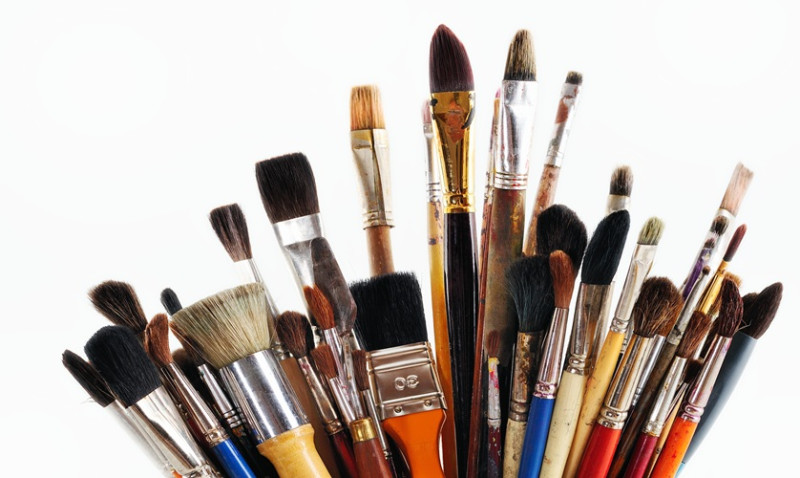
Turning your passion for art into a profitable business can feel like a fantasy—especially when the phrase “starving artist” still echoes around creative circles. But in today’s digital age, earning a substantial income with commissioned artwork is not only possible, it’s increasingly common. Whether you're a seasoned painter, an up-and-coming illustrator, or somewhere in between, there’s never been a better time to scale your artistic passion into a high-income business. This guide offers practical, tried-and-tested methods tailored for creatives based in the UK who are ready to take their art commissions to the next level.
Understand the Value of Your Art
Before you earn more money from art, you have to believe in its value. Many artists underprice their work out of fear people won’t buy it. In truth, pricing isn’t just about the material or the number of hours spent. It's about the emotional and aesthetic value your art brings to clients—the impact it makes in their lives and homes.
This is especially true in the UK, where home décor trends lean toward individuality and self-expression. Your creations can help a young couple personalise their first home, offer a statement piece for an architect’s design portfolio, or add a one-of-a-kind feature to a refurbished Victorian terrace. Don’t just sell art—present your art as a lifestyle product or decorative solution tailored to your client’s taste.
If you’re unsure what your art is worth, do some market research. Look at what similar artists charge, especially those whose audience overlaps with yours. It’s okay to start lower to gain traction, but don’t stay in the undercharging trap—your audience will always associate your brand with affordability rather than quality.
Define Your Niche and Style
The commission art world is flooded with generalists. If you try to appeal to everyone, you’ll likely connect with no one. Pick a niche: maybe you’re the go-to artist for modern pet portraits, custom abstract acrylic canvases, or urban-themed wall art for flats and co-working spaces in London.
Why does niching work? Because clients want to feel understood. A professional tradesman looking to spruce up his office won’t want to wade through 100 generic artists—they’ll want someone who specialises in sleek, masculine, industrial-style artworks. A young family in Manchester might prefer playful, mural-style wall art for their children’s room.
When you position yourself as a specialised artist in a particular niche, you become the expert. And experts get paid more.
Master Your Online Presence
In 2024, people discover artists online more often than in galleries. For UK artists, this can be a game-changer. With a well-crafted online strategy, you can attract organic traffic, garner social proof, and receive consistent commission inquiries.
Start with your website—it needs to be clean, professional, mobile-friendly, and able to accept inquiries or payments. Include a comprehensive gallery of past commission work, client testimonials, and a clearly outlined process for commissioning a piece. Mention turnaround times, pricing brackets, and mediums offered.
Leverage social platforms. Instagram and Pinterest are gold mines for visual exposure. Tailor your content: share time-lapse videos of your creation process, before-and-after shots, and styling inspiration for interiors. Use UK-based hashtags like #UKartist, #LondonArtCommision, or region-specific trends like #ManchesterMural. Join local Facebook groups or Reddit threads where people request custom artwork recommendations.
For SEO, ensure your content includes keywords your target market searches for—“custom canvas portraits UK,” “bespoke interior wall art,” or “UK art commissions for modern homes.” Blog about common questions, share behind-the-scenes stories, and optimise each piece with local keywords so potential clients in the UK find you directly.
Streamline the Commissioning Process
One of the biggest reasons clients hesitate to commission art? Confusion and uncertainty. Make your process simple, friendly, and professional. Create a clear step-by-step art commission workflow on your site, in emails, and in every interaction.
Have a downloadable price guide or a “quick quote” form where clients can fill out what they want. Respond promptly, outline timeframes, and offer payment plans or deposits. Welcome feedback and communicate during each stage—sketch approval, colour confirmation, final preview, etc.
Your goal is to remove friction. The easier it is to commission you, the more commissions you’ll get. Even better—happy clients often recommend you to friends, family, and Instagram followers, multiplying your reach organically.
| Step | Description |
|---|---|
| 1. Inquiry | Client fills out a form or emails details (size, style, colours, budget) |
| 2. Quote | You respond with pricing, timeline, and process breakdown |
| 3. Deposit | Client pays a deposit (usually 30-50%) to begin work |
| 4. Sketch Preview | You send a rough sketch/mockup for approval |
| 5. Final Work | You complete the artwork based on feedback |
| 6. Final Payment + Delivery | Client pays final balance, and you ship/deliver or install the artwork |
Offer Tiered Pricing Options
Not everyone can afford a £1,000 commission—and that’s okay. But to increase income, offer multiple pricing tiers to suit different client budgets. For example: a mini canvas portrait at £150, a mid-size framed acrylic at £350, and a large bespoke canvas at £1,000+. Add-on services (like framing, rush orders, or gift wrapping) can create additional revenue per order.
By offering options, you tap into a wider market while still commanding higher fees from those willing to invest in your premium offering. Use your website or brochure to layout silver/gold/platinum packages depending on the level of customisation offered.
Collaborate with Local Interior Designers and Architects
For many UK-based artists, finding consistent streams of high-paying clients is key to building lasting income. One brilliant strategy? Partner with interior designers, architects, and home staging companies.
Many of these professionals are constantly on the lookout for trustworthy artists who can create site-specific work for their projects. Whether they need a large bespoke painting for a penthouse or a mural in a commercial lobby, being their go-to artist will land you continuous commissions without needing to pursue each one individually.
Reach out via LinkedIn, attend trade shows, or even browse local directories to find design professionals. Offer artists’ portfolios in PDF form and make it extremely simple for them to recommend you. In exchange, you can offer them a referral fee, exclusive pricing, or simply the value of reliable delivery and quality artwork.
Diversify Your Art Income Streams
In addition to commissions, look at passive and semi-passive income streams that utilise your artwork. This could include selling art prints via Etsy or a print-on-demand service, licensing your work for textiles or wallpapers, or offering online art classes.
With popular UK marketplaces like Not On The High Street or Folksy, you can list smaller, more affordable pieces or limited-edition prints. Ideal for younger professionals or renters who want unique art but aren’t ready to invest big yet. These accessible options help build your audience and later lead them to invest in your larger commissions once they’re ready.
Build a Reputation That Sells For You
Word of mouth is a powerful currency in art. A single thrilled client can bring you five more. Encourage reviews—on your website, Google, Trustpilot, even local Facebook groups. Post client testimonials beside the final piece photos online. When possible, ask them to tag you if they share it on social media.
Show behind-the-scenes shots, your sketchbook, your working environment. Let your audience connect with the person behind the painting. This builds trust and likeability—essential elements that drive conversions today.
Final Thoughts
Becoming rich doing art isn’t about “selling out”—it’s about selling smart. Think like a business owner, build systems around your creativity, and provide a clear, professional service that meets your client’s vision. Whether your passion lies in interiors, personal portraits, or contemporary installations, there’s space in the UK market for your work—and people waiting to pay you for it.
So pick up that brush, grab your tablet, or open your sketchpad—it’s time your art started paying you what you deserve.





